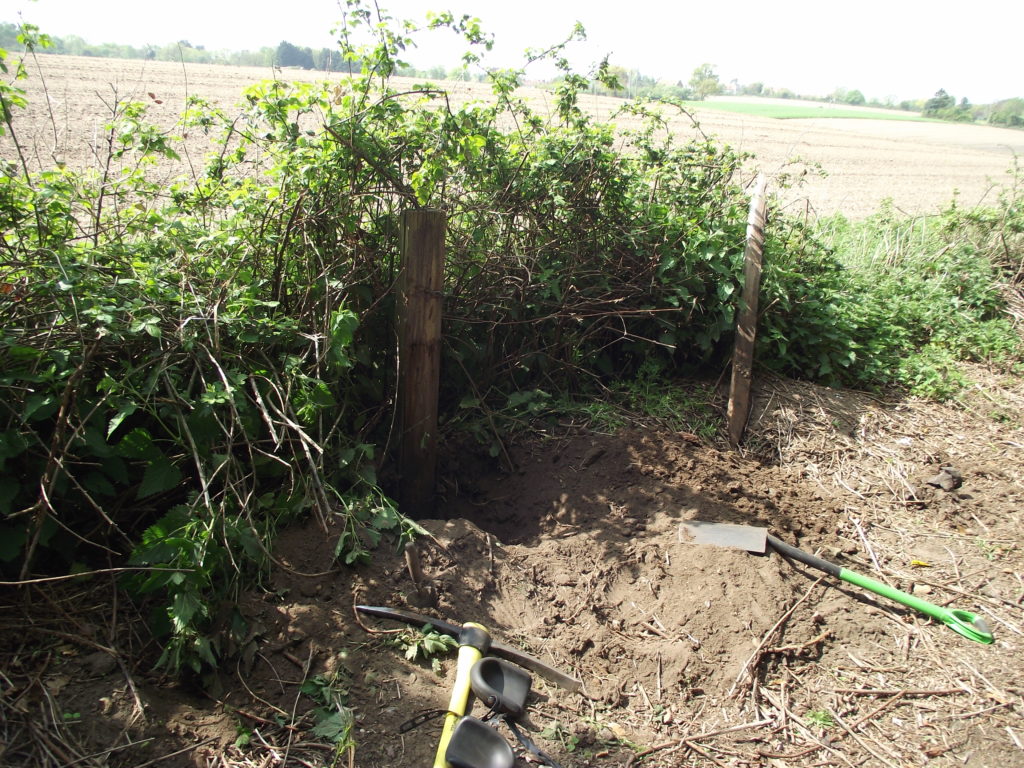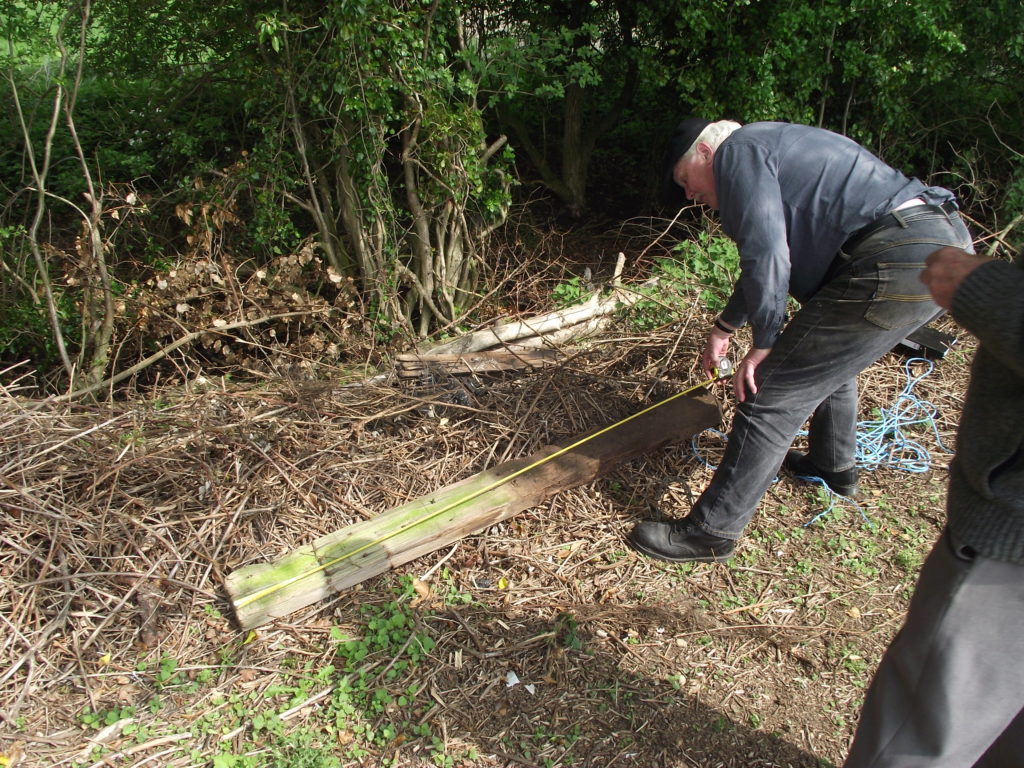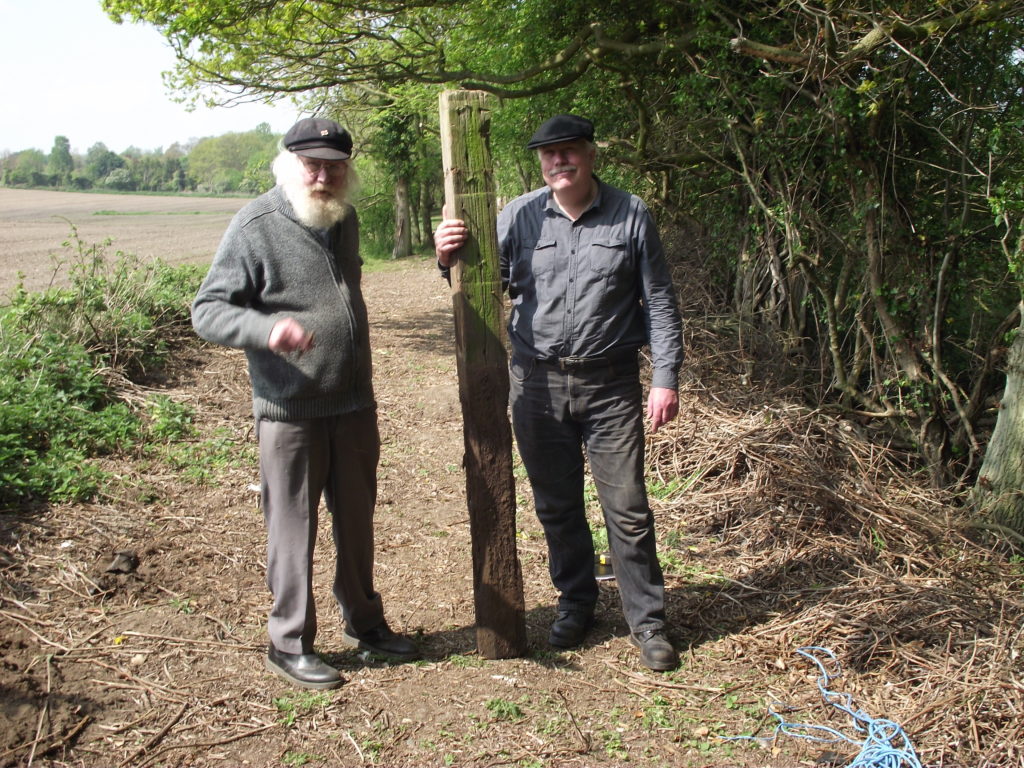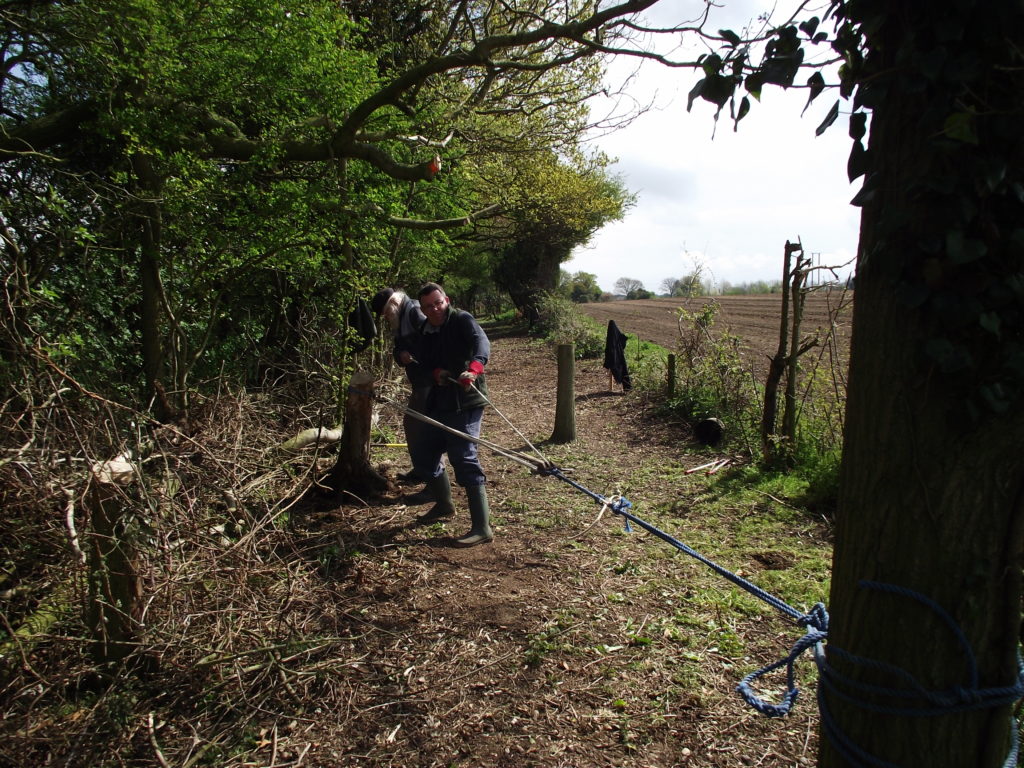
Another beautiful spring day – we do seem to be very lucky with this – perhaps to offset our frustration about the planning situation! On Wednesday April 30th, four volunteers – John, Bob, Toby and James – started with the now-customary “spreading of the hoggin” by our entrance, before decamping to the trackbed, and getting stuck in to stumps, brambles and twiggery

John’s pulley system, used with some digging and root cutting, worked very nicely indeed to remove a large number of medium-sized stumps: he quite happily spliced ropes to take the strain of the pulling, although he served in the Irish Guards, not the navy. But as ropage was definitely involved, I instituted the classic (borrowed from the Welsh Highland Railway Civils Team) cry of “two….six”, supposed to be a navy tradition, where the “two” is for preparation, and the “six” is explosive and enhances effort. Or so I am told. Sadly, we managed to split one sheave block after John left, so I will have to apologise to him, grovel, and replace it. I somehow doubt that a block carved from a single piece of hardwood will be that easy to find. Leaving the very largest stumps (for mechanical assistance, or at least younger workers), we have cleared about 6 chains from the east.
Continuing the martial theme, but army this time – the team were somewhat disconcerted when, having spent a great deal of time and effort unearthing an original SR fenced post, I measured it, scribbled notes – and promptly put it back in the same hole! Not satisfied with that, we did it again, only more so – the post was buried 3 to 4 feet in the organic matter and earth which has washed down from the adjacent field. Shades of the classic “digging holes and filling them up again” punishment for out-of-line infantry conscripts. Sensing a tendency to grumble about time-wasting, I hastened to explain.

It has long been my theory that the SR used exactly the same timber for fencing and for sleepers. While the sleepers were (even for a lightly-built railway) really much too flimsy at 6 foot by 6 inches by 3 inches – and very widely spaced – the fence posts, at the same cross section, must have been a nightmare to set up, and, being oblong, are not ideal – most railways would have used square posts for strength. So I wanted to see if we had an intact, non-rotted post which would prove it. The second one did (the first was rotted off below ground). I also now have a measurement for the spacing of the horizontal wooden rails on the fence, so we can proceed with design, sourcing and costing of the classic SR-style railside fencing. We also now know that the posts which remain onsite – and there’s, amazingly, quite a few, still – are mostly good enough to re-use. We even have quite a few lengths of the 1 inch by 3.5 inch rails which can be re-used – jointed together into twelve foot lengths.
But, best of all, there’s enough original posts still in situ to
define the original boundary fence line – so, avoiding later-grown trees
– all we have to do is put it all back.
A lot of effort, one might say, for a very little reward. But the SR
4-rail fences were as much part of the unique image of the railway as
the Sharpies, the Cleminsons, and the curved-ended open wagons. So – as
it’s good landowning practice to mark boundaries anyway, and fencing is
the best way to do that, we may as well do the thing properly. I do,
though, I think, draw the line at using (or finding) original-style
square-section handmade blunt nails to hold the whole thing together.

